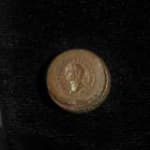Roman Coin Forger's Die, 17th Century CE - 19th Century CE
Brass
C.9067
The 19th century was the golden age of museum creation throughout Europe. This period not coincidently coincides with the foundation of modern archeology and art history. These academic fields provided...
The 19th century was the golden age of museum creation throughout Europe. This period not coincidently coincides with the foundation of modern archeology and art history. These academic fields provided the framework with which artifacts from the past were unearthed, attributed, and appreciated. Colonial occupation also enabled European powers to acquire treasures from cultures around the world that were in turn housed in public palaces, so-called encyclopedic collections. While national museums profited from the influx of treasures arriving from foreign shores, museums founded in smaller cities and regional capital were not so lucky. Seeking to build up their numismatic collections, these smaller museums looked toward those encyclopedic museums for material. However, in this day and age, the role of the museum was often geared more towards education. As such, authenticity was not the foremost concern. So when it came time to share their coin collections with others, the major museums opted to make molds of their ancient coins so that the regional museums could strike their own and keep these contemporary duplicated on permanent display. These intriguing relics are tangible manifestations of our quest to understand the past. In the past, the replicas created by these bronze dies no doubt helped spread knowledge of antiquity beyond the major cities of Europe, allowing a greater part of 19th century society to share in the joy of history and the artistry of antiquity.



